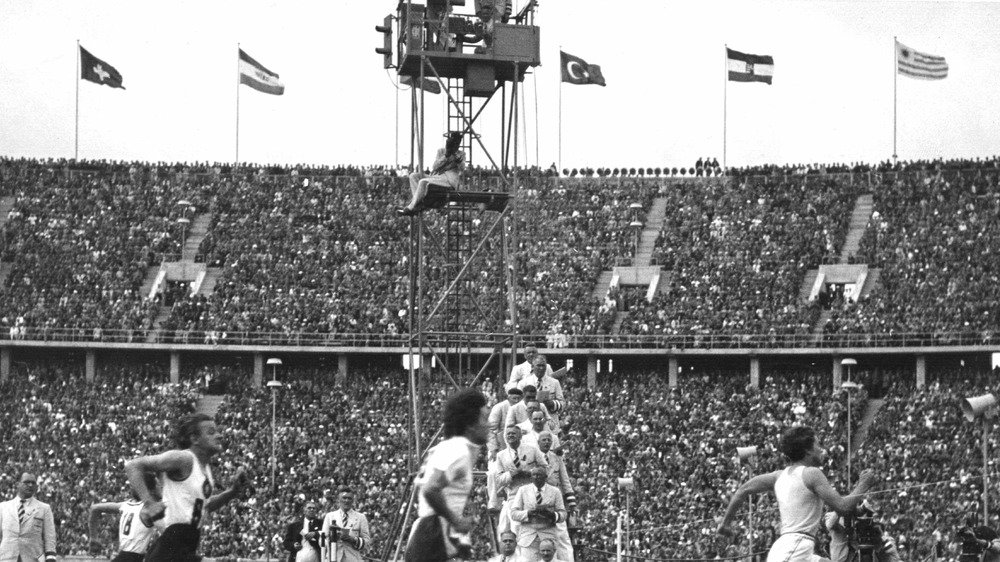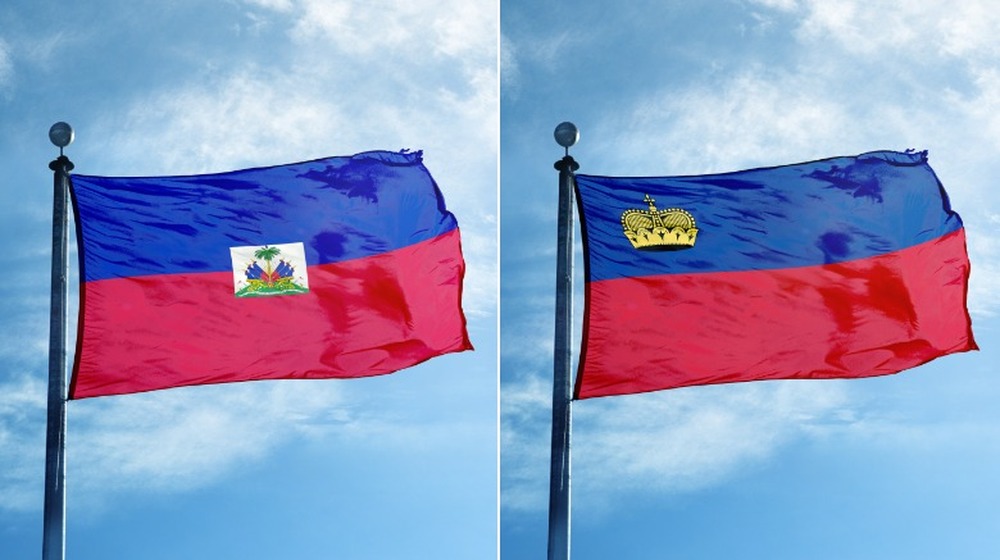How The 1936 Olympics Made Two Countries Realize They Had The Same Flag
There are some pretty similar-looking flags out there, but it's rare for two countries to have exactly the same flag. Right now, the closest-looking national flags belong to Chad and Romania. Both have vertical stripes in blue, yellow, and red, but the shades of each color are ever-so-slightly different. But there was actually a period in history where two countries had identical flags without even knowing it. It wasn't until the 1936 Summer Olympics that the nations discovered the truth.
Per the Encyclopedia Britannica, the 1936 Olympics in Berlin was already unusual in a number of ways. For one thing, it was the first Olympics to be televised. And — oh, yeah — it was also opened by Germany's Chancellor, Adolf Hitler, who viewed the event as a means to promote his theory of racial hierarchy. (Black track-and-field star Jesse Owens, representing the United States, thwarted that agenda by becoming the most successful athlete at the Games.)
While all that was going on, a lesser-known interaction occurred between the small Caribbean country of Haiti and the tiny European nation of Liechtenstein. At the 1936 Olympics, Haiti competed under its civil flag, a horizontal blue stripe on top of an equal-width red stripe. In contrast, Haiti's national flag includes a coat of arms in the center, per CRW Flags, but the civil flag was more commonly used for non-governmental affairs like the Olympics.
At the 1936 Olympics, Haiti and Lichtenstein discovered that their flags were identical
Liechtenstein, for its part, was competing under a relatively new flag. According to the Flag Institute, Liechtenstein had used a flag of two vertical blue and red stripes for decades, but flipped it 90 degrees to a horizontal design in 1921. But, wait a minute ... A blue stripe on top of a red stripe? Isn't that the same design as Haiti's flag? Yes, it is, but neither country knew about this similarity until 1936, when they saw each other's flags for the first time at the Summer Olympics.
It may seem crazy that two countries could have identical flags without realizing it, but it's understandable in context. There was (obviously) no internet in the 1930s, and even color photography was rare. It took the Olympics for two small countries from different continents to actually witness each other's flags. Additionally, 1936 was Liechtenstein's first-ever time competing in the Games.
Naturally, this little mix-up was a bit embarrassing for both countries involved. As a result, the Flag Institute explains, Liechtenstein added a gold crown to the top-left corner of its flag in 1937. Similarly, Haiti's national flag (the one with the coat of arms) is now far more common than the two-band civil flag. Today, the two flags remain similar, but are distinct enough to prevent utter confusion. Maybe Chad and Romania could learn from 1936 and find a little design to add to each flag? Just a suggestion.

